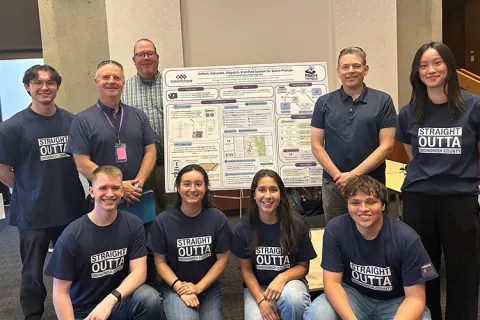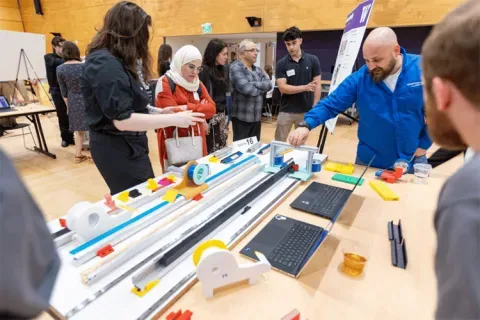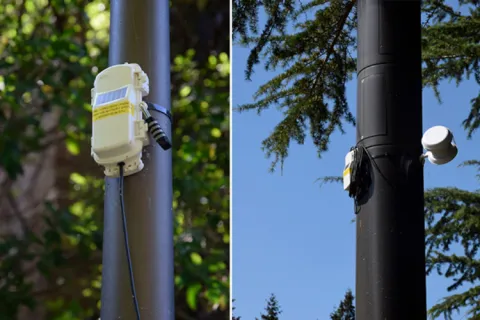Microsoft
DAC Unit for Insitu PPHG Communication with Battery Cycle Tester
This student team will work to develop and design a DAC system that will take the digital output of the in-situ PPHG device and convert to analog voltage that is synced to Maccor Battery Test System. Design should be scaled to handle 48 in-situ PPHG units. Background: All batteries expand and contract as they are charged and discharged. Over time the battery thickness grows due to internal gases not recombining and growth of the SEI layer. This swelling can be accommodated in most devices (laptops, phones, etc.) by leaving an adequate gap above or below the battery. With a desire to keep devices thin this gap should be optimized. So, it is critical that we understand the battery swelling characteristics. Currently as the battery is cycled (charged and discharged) it is periodically paused so that someone can disconnect the cell or pack, remove it from the thermal chamber and manually measure the thickness. This data then is manually added to the Battery Cycler Data to track swell with cycle number. This is a very labor intensive process. Microsoft Battery Development Team has developed designed and patented an insitu PPHG (Parallel Plate Height Gauge) that resides in the chamber. This insitu PPHG can continually monitor the battery thickness and enables greater characterization of the battery with the capability of tracking the battery breathing. Battery breathing allows the Battery Engineers to understand the effects of different charge and discharge rates on the expansion and contraction as well as detecting peak swell where the manual method did not. This also saves large amounts of labor costs by eliminating the need for someone to interrupt the testing process to physically measure the thickness. This not only provides additional scientific value but also financial value as well. Problem & Requirements The output of the gauge is a digital signal. The Maccor Battery Test system can only intake analog signals. So a DAC is needed to convert the gauge signal to a form the Maccor can use. It is critical that this data be properly synced to the Maccor cycle data so the breathing can be aligned to where the battery cycle is at. • A rudimentary DAC was kluged together to validate the gauge design. This used an Arduino DUE1 as the DAC and connected to the Maccor system. This design does not scale. A scalable design is needed to propagate this new characterization system to the entire battery lab. • Given the digital output of the gauge and daisy chain design for the interconnect using a common serial bus interface (SMBUS, CAN, I2C). This minimizes the cable count leaving the Thermal Chamber. • It is preferred to have a system comprise of 48 PPHG encoder channels (Maccor channels counts are 48 or 96) • The Interface unit should be easily serviceable and repairable • The interface unit should fit into standard Rack form factor (2U max preferred).
Faculty Adviser(s)
Jose Gutierrez, Electrical & Computer Engineering
Related News

Mon, 10/13/2025 | UW Mechanical Engineering
Capstone collaboration leads to award
An ME capstone team received first place for its energy audit of the UW School of Social Work building.

Thu, 07/17/2025
UW engineering students develop smart ballot solution
UW engineering students develop smart technology solution to improve ballot collection for Snohomish County.

Mon, 07/07/2025 | UW Mechanical Engineering
Capstone creations
Students displayed innovative capstone design projects at the 2025 expo.

Fri, 09/20/2024 | UW Civil & Environmental Engineering
Smarter irrigation for a greener UW
A new project combines satellite data with ground sensors to conserve water and create a more sustainable campus environment.